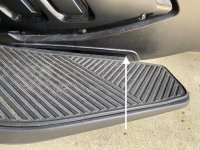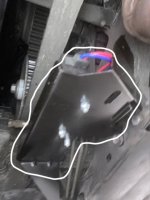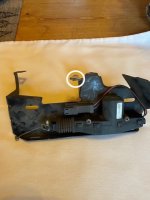BamaJohn
Well-known member
Yesterday, I suited up and went out for a ride. Key "on", Spyder fired right up...but when I tried to put it into reverse, the dash went black and the left hand switch cluster went dead.
Having replaced the left hand switch cluster a few months ago, my worst fear was that it had crapped out again.
But, thinking through the sequence of events and the suddenness of the blackout, I got the owners manual out and checked the fuse boxes diagrams and the culprit was a blown #7 fuse (10amp) in the left hand fuse box...an easy fix.
I have no idea why the fuse blew, but the ride yesterday (about 100 miles with multiple stops and restarts) was uneventful. Perhaps I should include a fuse puller in my tool kit....:thumbup:
edit: FYI...there are a few spare fuses in the cover of the left hand fuse box.
Having replaced the left hand switch cluster a few months ago, my worst fear was that it had crapped out again.
But, thinking through the sequence of events and the suddenness of the blackout, I got the owners manual out and checked the fuse boxes diagrams and the culprit was a blown #7 fuse (10amp) in the left hand fuse box...an easy fix.
I have no idea why the fuse blew, but the ride yesterday (about 100 miles with multiple stops and restarts) was uneventful. Perhaps I should include a fuse puller in my tool kit....:thumbup:
edit: FYI...there are a few spare fuses in the cover of the left hand fuse box.
Last edited:



